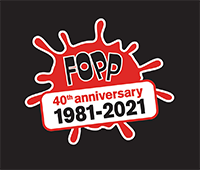Anthony Newley stars in the Uncut Gems of early 1960s Brit cinema. He’s a motormouth nightclub MC whose gambling debts are going to result in two broken legs. Thus we see Sammy run through his complicated life and loves to raise the money. A funny, gritty time capsule of 60s London, the shots of Newley legging it along Wardour Street in 1962 are worth the price of admission alone.
Edgar Wright
Do you remember Anthony Newley? He was a star in the 60s. In 1963, the same year he played the lead in Ken Hughes’ breathless, splendid Soho-set Brit noir The Small World of Sammy Lee, stylishly shot by Wolfgang Suschitzky, he was all over the place – an acclaimed actor, singer, and songwriter at the top of his game.
Having started out as a child performer, he’d been splendid early on as the Artful Dodger in David Lean’s Oliver Twist (1948), but he’d scored still more success as an adult – striding towards fully-fledged screen stardom with films like Idle on Parade (1959), portraying a drafted rock‘n’roller, in a services comedy loosely inspired by Elvis Presley’s much-publicised army call-up. Newley could sing, and write songs too: a film tie-in EP showcased Newley’s self-penned rock’n’roll, plus his powerful performance of a brilliant bombast-ballad, the superbly syrupy, achingly overwrought ‘I’ve Waited So Long’ – the first of numerous chart hits.
Precociously gifted, Newley could do it all. Working with Leslie Bricusse, he co-wrote the lyric to John Barry’s Bond theme ‘Goldfinger’; continuing his enduring partnership with Bricusse he co-wrote – and then starred in – the musical Stop the World, I Want to Get Off, a smash hit in the West End and on Broadway in 1961-62.
But celebrity – however well deserved – does not always endure. Now, nearly two decades after Newley died of cancer, aged 67, in 1999, while his work is still celebrated by a small but ardent band of devotees, he’s far from a household name. He’s sometimes referenced nowadays as a one-time husband of Joan Collins; cited as the cockney-sparrow influence on David Bowie’s vocal style; occasionally smirked back upon at as the archetypal hammy Las Vegas songster. But to remember him only like this is to do his versatile talents grave disservice.
Sure enough, latter-day Tony did cheerfully crank out selections from his bounteous back catalogue in chintzy casinos to bolster his bankroll. Skipping mischievously about plushly carpeted supper-club stages (perhaps his natural habitat), flared collars flapping, great (but past) glories like ‘Candyman’ (from Newley and Bricusse’s Academy Award-nominated score for the 1971 film Willy Wonka & the Chocolate Factory) were belted out. This particular catchy classic was invariably performed while Tony daintily clutched a basket of glacé goodies, from which he’d bung the occasional well-aimed boiled sweet at any corpulent, disinterested audience member not giving him the attention he craved.
Sure enough, Tony appeared content to enjoy the jetset high-life that success bought, and he energetically played the playboy, with glamorous wives and girlfriends. But back in daring, monochromatic early days of artistic endeavour, he’d been a fearless risk-taker. He’d starred in one of the weirdest television ‘comedy’ shows ever, The Strange World of Gurney Slade (1960), a self-referential six-part serving of creepy almost-comic strangeness that broke new ground but baffled viewers with its arty absence of belly laughs.
Later, and in full colour, Tony’s bizarre, grandiose Fellini-esque musical mid-life self-analysis feature-folly-masterpiece Can Heironymus Merkin Ever Forget Mercy Humppe and Find True Happiness? (1969) threatened to expose so many potentially unflattering semi-autobiographical wrinkles for all to see on the big-screen that Leslie Bricusse tried to talk his old chum out of the dangerously psyche-splurging scheme altogether. He failed. Tony’s seriously strange movie divided critical opinion. General audiences, meanwhile, already put off by its archly unwieldy title, stayed at home anyhow, and the film was a resounding flop.
But one thing’s for sure: when something worked for Newley it really worked; and The Small World of Sammy Lee worked brilliantly. See this superb film and you will witness precisely the acute creative on-screen energy that – when tightly harnessed, channelled, and controlled, in this case by Ken Hughes’ spiky script and taut direction – made Anthony Newley so extra special.
The Small World of Sammy Lee originated as a claustrophobic one-man television play, Sammy (1958), written by Hughes, centring around Newley’s titular Soho wide-boy on the blower desperately trying to scare up £200 for the bookie before burly bully-boys arrive to collect.
Bolstered by the recent successes of Hughes’ The Trials of Oscar Wilde (1960) and Newley’s well-received stage show, Sammy was expanded to become a feature film. With gifted Wolfgang Suschitzky aboard as cinematographer, this talented team delivered a gloriously grimy, gritty, downbeat London gangland classic.
Largely shot on the streets of Soho, it sees Newley – again exceptional as Sammy, now a strip-club compere – frantically chasing cash across town before time runs out, surrounded by a crackerjack cast including Julia Foster (as an old flame who’ll do anything to win Sammy back), Miriam Karlin, Wilfrid Brambell, Roy Kinnear and Warren Mitchell.
Now that seamy Soho seems to have vanished before our very eyes, the lewd London glimpsed so effectively as the backdrop to Sammy Lee also eerily emerges as valuable documentary evidence of a largely unsung urban panorama. Captured by Suschitzky’s lens are narrow streets and shop-fronts that speak evocatively of a grime-encrusted Soho, circa 1960, a little run-down and slightly seedy perhaps, but oozing with individuality, character and atmosphere – a Soho now largely being supplanted by interchangeable retail chains, office blocks, and harshly angular vistas of chrome, plastic and glass.
As Sammy dashes about the curvy, cobbly, intricate, increasingly distant streets of long-ago London town, seeking financial salvation, despite the hustle and bustle of the crowd he strikes a lonely figure. Hard-hitting, gripping, achingly melancholy in tone, but sharply spiced with the hopelessly piquant pepper of Sammy’s cynical wisecracks, The Small World of Sammy Lee reminds us that the loneliest place can very often be that spot right at the heart of a crowd.
Which may be just one of the reasons why Anthony Newley is so exceptional in this role. Newley, though at home on stage, oft gave the impression of a man unsettled, with love, with life, and always on the run – perhaps from himself – despite his success. Certainly that’s the conclusion you might draw if you allow yourself to believe the words of his signature song – perhaps the most lugubriously theatrical ballad he ever wrote with Bricusse, the tears-of-a-clown show-closer ‘What Kind of Fool Am I?’
Could it be that offstage, despite fame’s glitziest trappings, Tony considered himself a man alone at the heart of a crowd – something like Sammy? Was it, perhaps, the part he was born to play? Certainly, London is a lonely place when you’re down on your luck; and certainly, here, Anthony Newley, thoroughly convincing in his supremely lonely portrayal of sad Sammy, gives what might be his greatest and most affecting performance, in what is perhaps Ken Hughes’ finest film.
Vic Pratt, bfi.org.uk, 12 October 2016
LOOK AT LIFE: IN GEAR
UK 1967
9 mins
THE SMALL WORLD OF SAMMY LEE
Director: Ken Hughes
©: Elgin Films Ltd
Production Company: Elgin Films Ltd
Producer: Frank Godwin
Production Manager: Robert Sterne
Assistant Director: Christopher Dryhurst
Continuity: Yvonne Richards
Casting Director: David Booth
Screenplay: Ken Hughes
Original Play: Ken Hughes
Director of Photography: Wolfgang Suschitzky
Camera Operator: Geoffrey Seaholme
Editor: Henry Richardson
Art Director: Séamus Flannery
Assistant Art Director: George Lack
Wardrobe: Eileen Sullivan, Ray Beck
Make-up: Jimmy Evans
Hairstylist: Joyce James
Titles: Chambers & Partners
Music: Kenny Graham
Conducted by: Philip Martell
Choreography: Lili Berde
Sound Recording: Leslie Hammond, Hugh Strain
Sound Editor: Jim Roddan
Studio: Shepperton Studios
uncredited
Production Secretary: Jill Langley
2nd Assistant Director: Gordon Gilbert
3rd Assistant Director: Ray Freeborn
Focus Puller: Wally Byatt
Clapper Loader: John Deaton
Stills Photographer: Charles Trigg
1st Assistant Editor: Bryan Tilling
2nd Assistant Editor: Anthony Osborne
Draughtsman: Philip Cowlam
Laboratory: Denham Laboratories
Sound Camera Operator: Douglas Barnett
Boom Operator: Harry Tate
Sound Maintenance: L. James Gubbins
Assistant Sound Editor: John Black
Publicity Director: Jackie Ward
Cast
Anthony Newley (Sammy ‘Lee’ Leeman)
Robert Stephens (Gerry Sullivan)
Wilfrid Brambell (Harry)
Miriam Karlin (Milly)
Kenneth J. Warren (Fred)
Warren Mitchell (Lou Leeman)
Harry Locke (stage manager)
Harry Baird (Buddy Shine)
Alfred Burke (Big Eddie)
Roy Kinnear (Lucky Dave)
Clive Colin Bowler (Johnny)
Cyril Shaps (Maurice ‘Morrie’ Bellman)
Toni Palmer (Joan)
Julia Foster (Patsy)
Al Mulock (dealer)
Derek Nimmo (‘Rembrandt’)
June Cunningham (Rita)
Elmer (Lofty, newspaper seller)
Linda Baron (Yvette)
Ken Wayne (barman)
Ronald Radd (Big Alf)
Billy Milton (hardware store manager)
Kevin Brennan (poker player)
Louis Adams (Sydney)
Alberto Cardinali (Italian singer)
Patti Dalton, Pamela Law, Sara Lesley,
Brenda Fagan, Margherita Lopez (girls)
uncredited
Rita Webb (cleaning lady)
Coleridge Goode (bassist)
Joe Temperley
UK 1962©
107 mins
EDGAR WRIGHT’S LONDON AFTER DARK
Passport to Shame (AKA Room 43)
Mon 18 Oct 20:50; Sat 13 Nov 18:10
Peeping Tom
Tue 19 Oct 20:30; Sat 6 Nov 18:20
Beat Girl
Fri 22 Oct 20:40; Sun 31 Oct 16:20
West End Jungle + Look at Life: Market Place + Look at Life: Rising to High Office
Sat 23 Oct 20:40; Sat 20 Nov 14:40
The Pleasure Girls + Look at Life: Members Only
Mon 25 Oct 20:50; Mon 29 Nov 18:20
Frenzy
Wed 27 Oct 20:45; Fri 19 Nov 18:30
Darling
Thu 28 Oct 20:30; Sat 20 Nov 13:20
Bitter Harvest + Look at Life: Coffee Bar
Fri 29 Oct 18:00; Tue 9 Nov 20:45
The Small World of Sammy Lee + Look at Life: In Gear
Sat 30 Oct 20:30; Sat 6 Nov 20:45;
Tue 23 Nov 14:30
Primitive London + Look at Life: Goodbye Piccadilly
Mon 1 Nov 20:50; Thu 25 Nov 20:50
Promotional partners


BFI SOUTHBANK
Welcome to the home of great film and TV, with three cinemas and a studio, a world-class library, regular exhibitions and a pioneering Mediatheque with 1000s of free titles for you to explore. Browse special-edition merchandise in the BFI Shop.We're also pleased to offer you a unique new space, the BFI Riverfront – with unrivalled riverside views of Waterloo Bridge and beyond, a delicious seasonal menu, plus a stylish balcony bar for cocktails or special events. Come and enjoy a pre-cinema dinner or a drink on the balcony as the sun goes down.
BECOME A BFI MEMBER
Enjoy a great package of film benefits including priority booking at BFI Southbank and BFI Festivals. Join today at bfi.org.uk/join
BFI PLAYER
We are always open online on BFI Player where you can watch the best new, cult & classic cinema on demand. Showcasing hand-picked landmark British and independent titles, films are available to watch in three distinct ways: Subscription, Rentals & Free to view.
See something different today on player.bfi.org.uk
Join the BFI mailing list for regular programme updates. Not yet registered? Create a new account at www.bfi.org.uk/signup
Programme notes and credits compiled by the BFI Documentation Unit
Notes may be edited or abridged
Questions/comments? Contact the Programme Notes team by email

